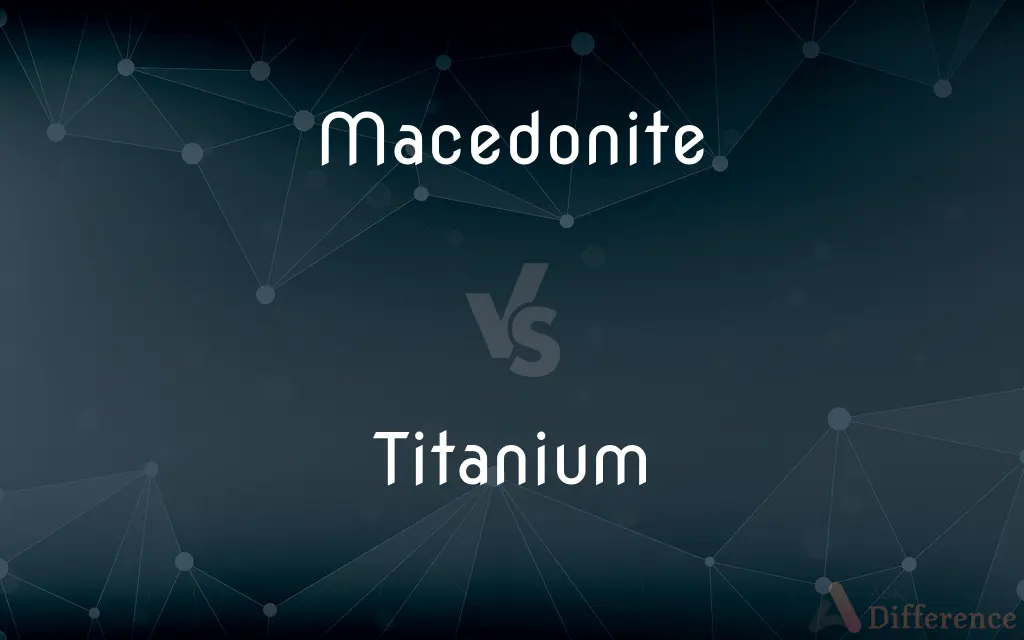Macedonite vs. Titanium — What's the Difference?

Difference Between Macedonite and Titanium
ADVERTISEMENT
Compare with Definitions
Macedonite
Macedonite is a mineral named by Radusinović and Markov in 1971. It has the elemental formula PbTiO3 and exhibits tetragonal crystal system.
Titanium
Titanium is a chemical element with the symbol Ti and atomic number 22. Its atomic weight is 47.867 measured in daltons.
Macedonite
(mineral) A tetragonal-ditetragonal dipyramidal black mineral containing lead, oxygen, and titanium.
Titanium
A strong, low-density, highly corrosion-resistant, lustrous white metallic element that occurs widely in igneous rocks and is used to alloy aircraft metals for low weight, strength, and high-temperature stability. Atomic number 22; atomic weight 47.87; melting point 1,668°C; boiling point 3,287°C; specific gravity 4.51; valence 2, 3, 4. See Periodic Table.
Titanium
A chemical element, atomic number 22; it is a strong, corrosion-resistant transition metal, used to make light alloys for aircraft etc.
ADVERTISEMENT
Titanium
(countable) A single atom of this element.
Titanium
An elementary substance found combined in the minerals manaccanite, rutile, sphene, etc., and isolated as an infusible iron-gray amorphous powder, having a metallic luster. It burns when heated in the air. Symbol Ti. Atomic weight 48.1.
Titanium
A light strong gray lustrous corrosion-resistant metallic element used in strong light-weight alloys (as for airplane parts); the main sources are rutile and ilmenite
Share Your Discovery

Previous Comparison
Phosphonate vs. Phosphate
Next Comparison
Stroll vs. Walk













































